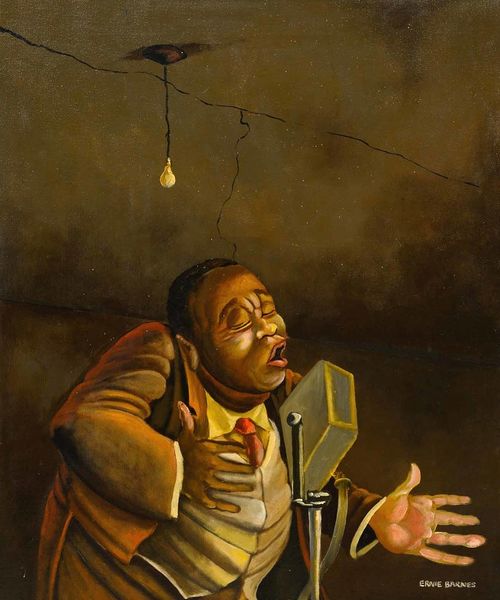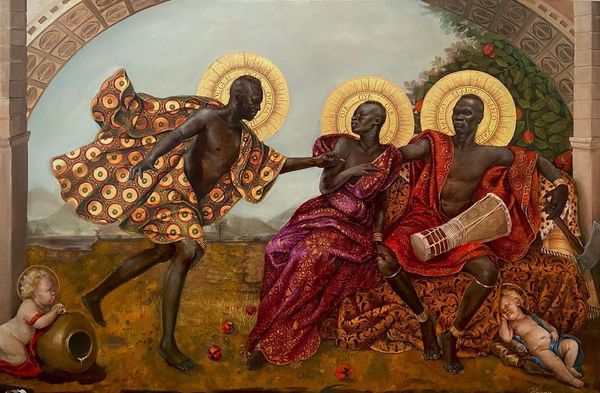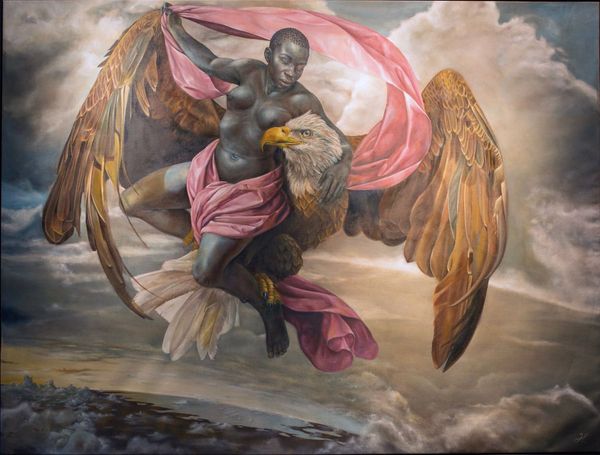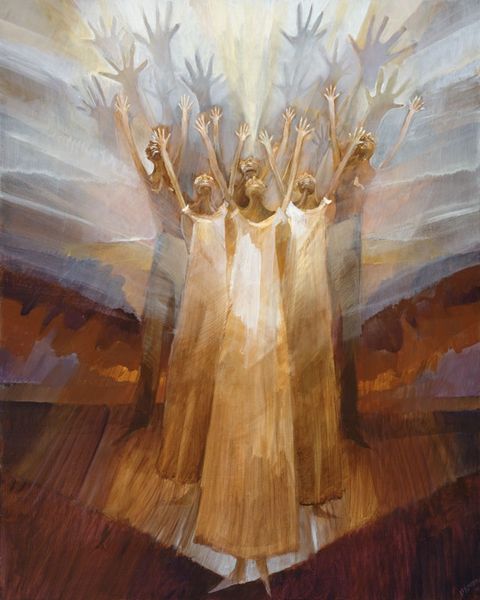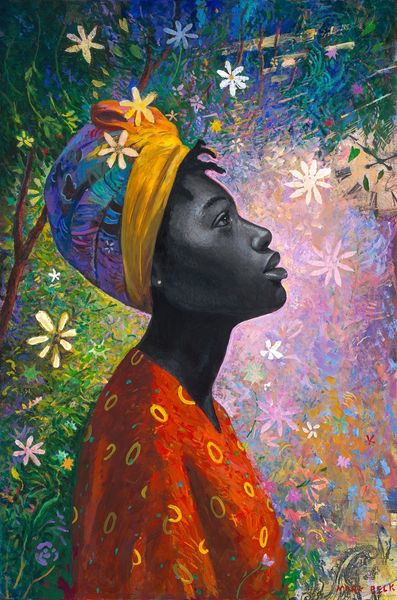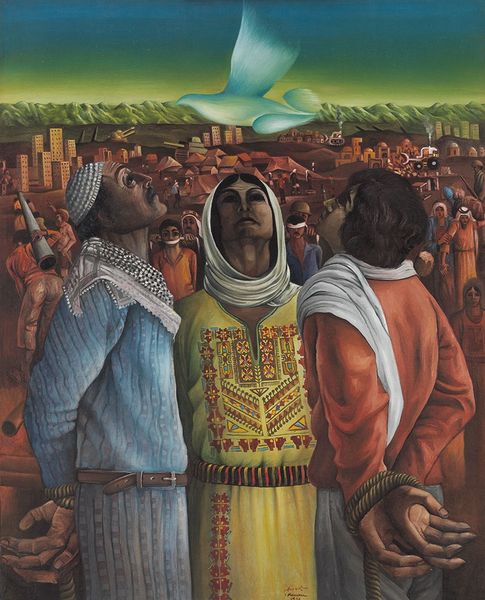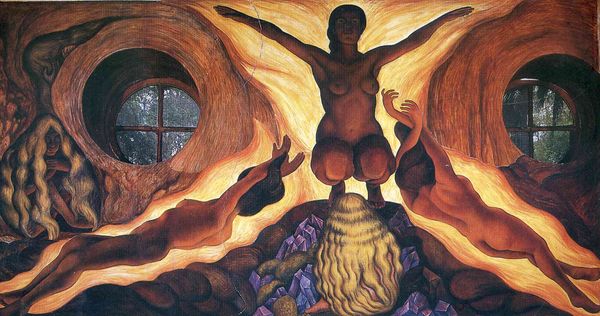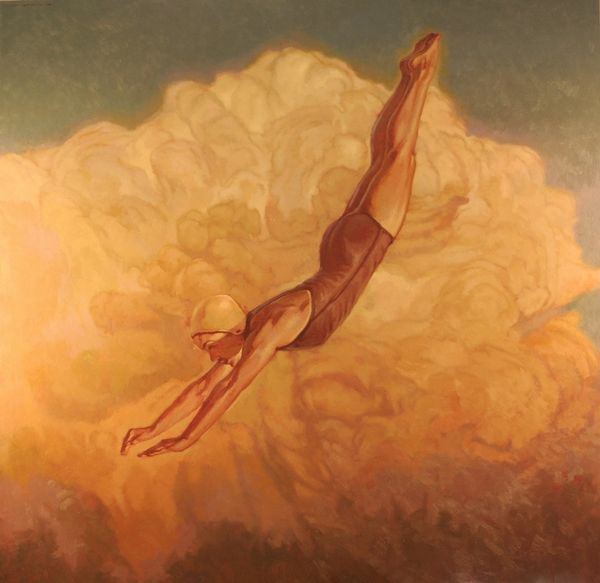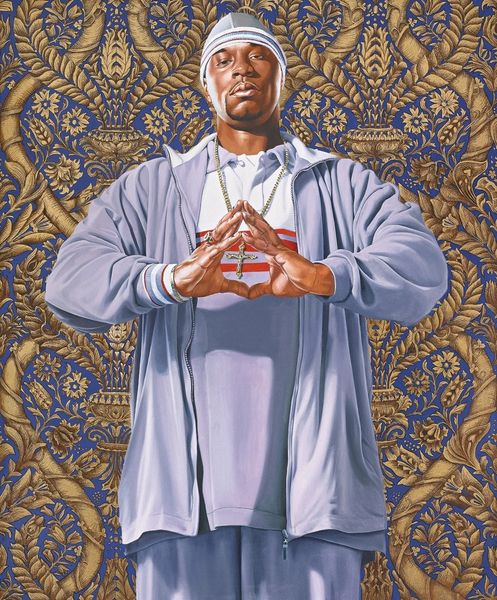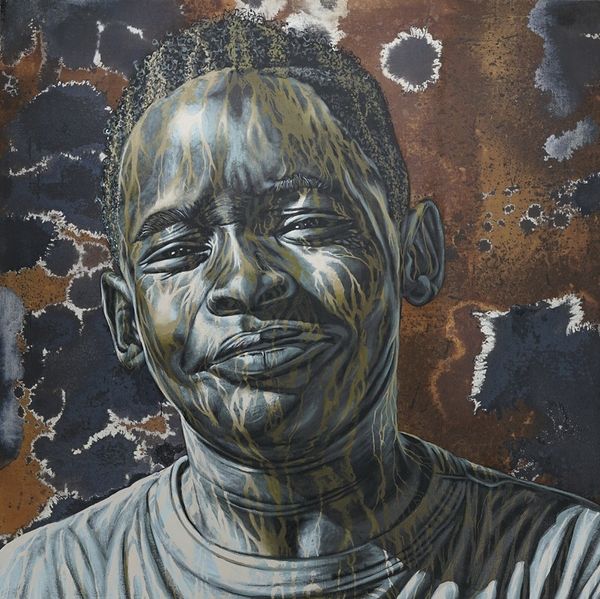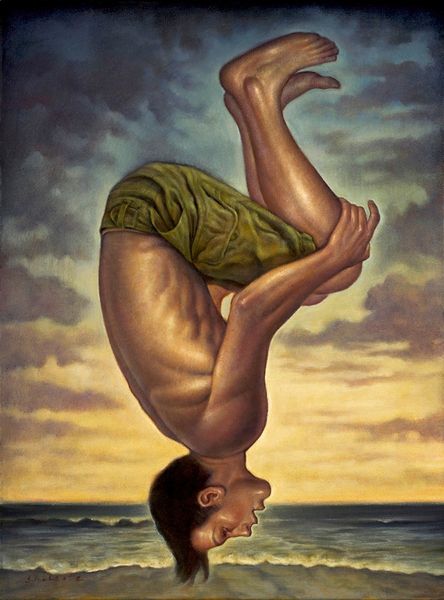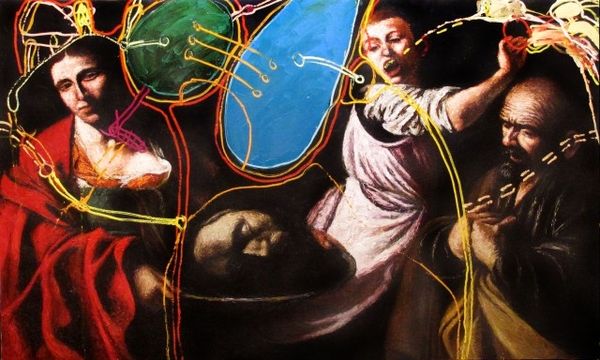
painting, oil-paint
#
portrait
#
figurative
#
narrative-art
#
painting
#
oil-paint
#
harlem-renaissance
#
figuration
#
social-realism
Copyright: Modern Artists: Artvee
Editor: We are looking at Ernie Barnes’ 1972 oil on canvas titled "The Pulpiteer." The figure's outstretched arms and tilted head immediately create a sense of passionate expression. What strikes you first when you examine its formal qualities? Curator: Immediately, the vortex in the background pulls the eye, emphasizing the preacher’s dynamism. The swirling composition clashes intentionally with the grounded color palette: browns, creams, blacks, resulting in dynamic contrast. Observe also the treatment of light—how Barnes sculpts form through highlighting key areas while obscuring others in shadow. The artist is clearly drawing attention to specific areas of interest using strategic manipulation of form and color. Editor: I see that. What is the purpose behind it? Curator: The slightly elongated limbs are notable, a hallmark of Barnes’ style, contributing to the sense of upward movement and emotional release. What we might read as a literal depiction also serves to visually amplify the emotional intensity. Do you notice the textural brushstrokes versus smooth blending to define areas such as the suit or the face? These decisions help draw the eye. Editor: That's fascinating. I hadn't considered how those subtle textural shifts affect the composition. The color palette feels somber compared to his other works. Curator: Exactly, but if you remove that swirl in the background and think of where that would lead our reading of this work, where the brush strokes would lead us, what then? The composition guides the viewers interpretation. It creates focal point. The figure almost fades into the environment. Editor: That makes so much sense now, thinking about it solely in terms of form and visual language!
Comments
No comments
Be the first to comment and join the conversation on the ultimate creative platform.
